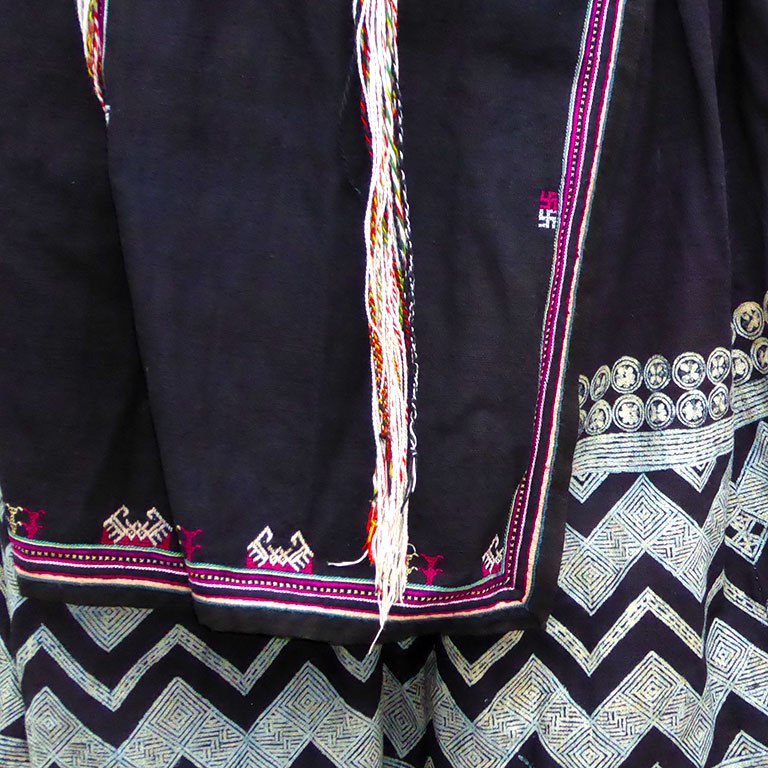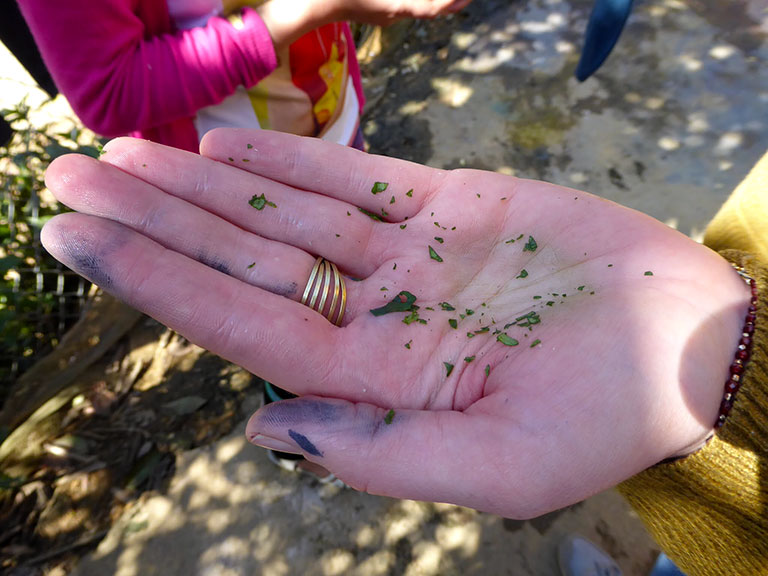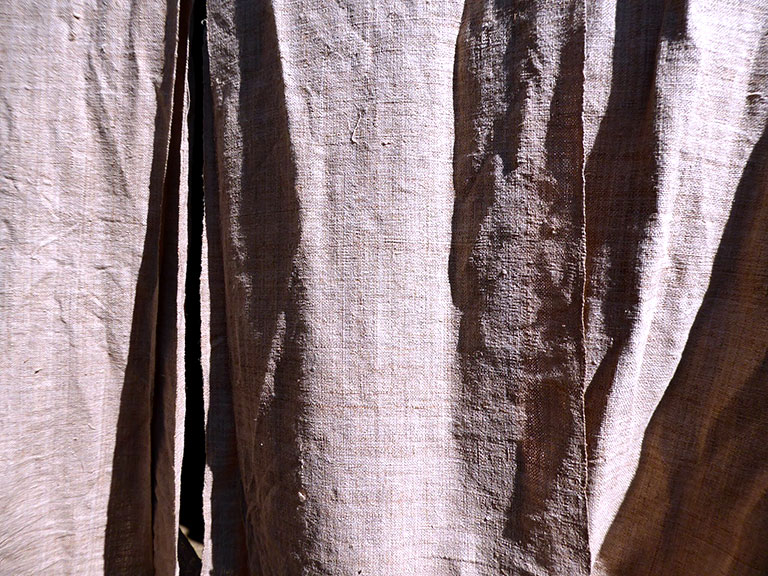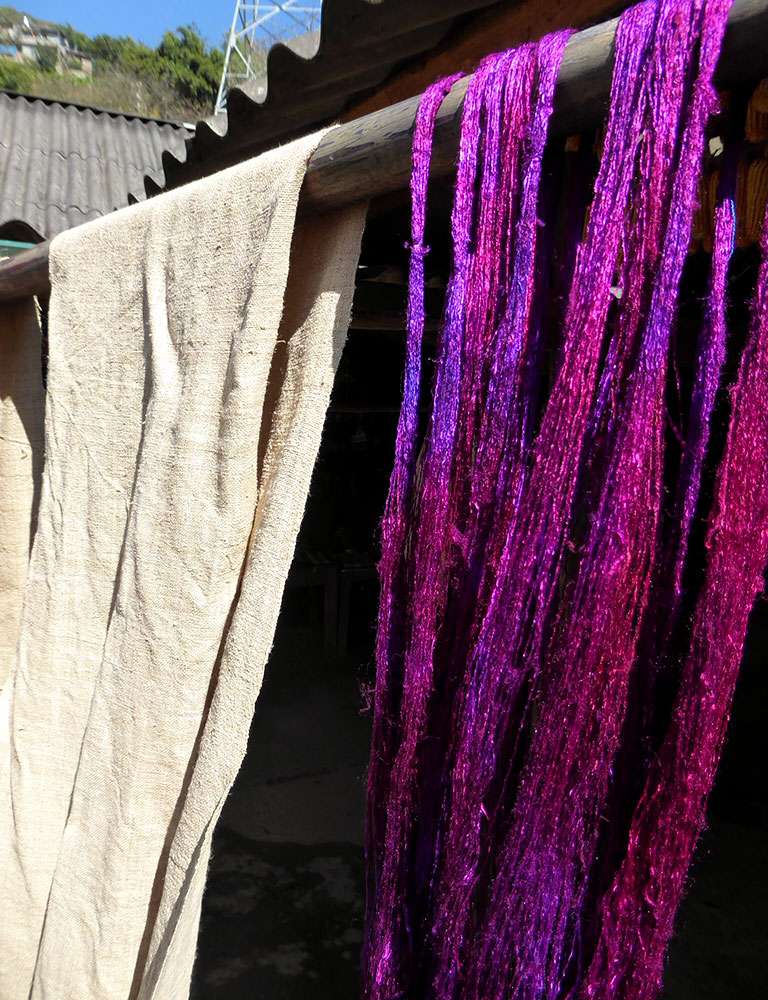I had a one of those moments last week. We were on a
two day trek with a group of lovely Canadians, a mother, her three daughters and their boyfriends. We had woken up from a night of rather a lot of rice wine and were invited to try on the traditional costumes of the Dao family we were staying with. In my hazy morning state I was very pleased when the Canadians obliged as it meant that a) I was excused from a potentially embarrassing situation and b) I could see the costumes in their full glory.
This is when the moment happened and I first noticed the beautiful batik and indigo dye that is used to decorate the traditional clothing of the many ethnic groups of north Vietnam including the Dao, Tay and Hmong.

I was struck by the intricacy and beauty of the lines, each drawing suggesting some kind of symbology and not only this but the intensity of the deep purple dye, rich and lustrous indigo! So I have since set about learning what I can about the wonderful natural colouring and here is what I've learnt so far…
The dye comes from the indigo plant which is grown in the mountains of north Vietnam it requires around 3 months growing time - this a picture of me having had the raw leaf rubbed hard into the palm of my hand to demonstrate it’s deep blue stain.

Once harvested the leaf of the plant is mixed up and ground with lime powder and submerged in water to make a pulp. Other ingredients are added to bring out the colour like ginger, lemongrass, chilli and no joke – rice wine. It looks good enough to eat!

Once the dye is ready it needs constant maintenance to ensure the colour is right. Change in temperature and humidity can affect it, even a bad turn of events like a death in the village can be deemed as detrimental to the colour.
The dyeing process itself takes a considerable amount of time, with the fabric needing to be submerged in the dye for a number of times over a period of 3-4 days, according to the intensity of colour required.

The fabric is then soaked in a mix of water, salt, lemon and bitter leaves to fix the colour. Another recipe of ingredients that I would quite have happily taken a sip of!

The fabric is then hung out to dry and is ready to be embroidered.

There is a mind blowingly vast number of pattern making methods used by the different ethnic groups across Vietnam and south-east Asia and I know I have only just scratched the surface. But after falling in love with indigo at first sight I feel this was a good place to begin my research…
Batik symbology of the Hmong to follow!